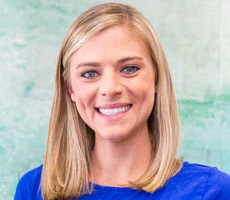The Leading Speakers Bureau for Booking Top Entertainment, Celebrities, and Speakers.

Annika Sorenstam
Annika Sorenstam Biography
Her parents, Tom and Gunilla, welcomed another daughter, Charlotta, two and a half years later. Thanks to their mom and dad, both girls loved sports, and like Tom and Gunilla, they were natural athletes. Everyone in the Sorenstam family skied and played tennis, volleyball, and badminton. Annika didn’t discover golf until her twelfth birthday. That was partly because of Sweden’s weather patterns. The country experiences winter-like conditions some six months a year, making the window of opportunity for a sport like golf narrow.
Nevertheless, Stockholm proved a wonderful place for an athletic girl to grow up. Located on Sweden’s eastern coast near the Baltic Sea, the city is home to a surprisingly dense population of sports enthusiasts. For much of her young life, Annika Sorenstam dreamed of becoming a professional tennis player. Her hero was countryman Bjorn Borg. She studied his game and wanted to follow in his footsteps.
That goal drove Sorenstam wherever the family went. After she turned 10, her father, who worked for IBM, was transferred to England. The Sorenstams moved to London and remained there for three years. During that time, Sorenstam continued on her path toward a pro tennis career.
She and Charlotta also got much closer while they lived in Great Britain. Since both sisters were talented tennis players, a case of sibling rivalry had been simmering for some time. When they were separated from their friends in Sweden, however, the two learned to rely heavily on each other. Of course, when they returned to Stockholm, they resumed their competitive ways.
As Sorenstam climbed the amateur rankings, she encountered opponents who were able to exploit the one flaw in her game: an ordinary backhand. Unable to hit consistent winners with this stroke, her frustration grew and her love of tennis began to diminish. One afternoon, when Sorenstam was 16, she chucked her racquet into a closet and told her father she was done with the sport. She was burnt out.
Tom Sorenstam was saddened by this development, but pleased with his daughter’s fallback position: golf. The Sorenstam home in Sweden was very close to the Bro-Balsta Golf Club. Tom and Gunilla were both golf enthusiasts, and at their urging, Sorenstam had taken up the sport, as had Charlotta. After her 14th birthday, Sorenstam began lessons with Henri Reis, one of Stockholm’s top instructors. The sport soon became her passion. When snow covered her home course, she was known to play with an orange ball. She often fantasized about winning the U.S. Open, which she considered the most prestigious title in women’s golf.
Sorenstam was drawn to golf for several reasons. The head games that opponents used on the tennis court didn’t apply on the golf course. There it was just her and her swing. That fed directly into her natural tendency toward scientific analysis, a trait she had inherited from her father. Sorenstam’s mind worked like a computer. When she applied this type of thinking to golf, she found a perfect outlet. Reis noticed this and sought to build her game around it. Day after day, Sorenstam focused on drills that produced near perfect tempo in every facet of her game.
Sorenstam never patterned her golf game after any one player, as she had in tennis. That’s not to say she was without role models. In addition to the advice and support from her parents, Sorenstam benefited from the experiences of Pia Nilsson, Sweden’s “first lady” of golf. An emerging star in the 1970s, Nilsson played for four years at Arizona State University before joining the LPGA tour. Though her pro career fizzled after five years, she returned to her homeland as a conquering hero. In 1988, Nilsson was named director of the women’s program for the Swedish Golf Federation. To no one’s surprise, the women’s game flourished under her watch.
This was the year Sweden’s Liselotte Neumann won the U.S. Open. Sorenstam remembers watching her on television and realizing for the first time that she too might one day accomplish great things on golf’s world stage. From that point on, her progress accelerated dramatically.
Despite sometimes slipping into the habit of picking her head up when she struck the ball, Sorenstam became one of Nilsson’s prize pupils. Since none of Sweden’s six universities had golf teams, the former pro arranged overseas scholarships for her country’s top female stars. In 1990 she helped broker an offer for Sorenstam from the University of Arizona. The 19-year-old arrived in Tucson that fall.
Sorenstam felt right at home at Arizona. Thanks to her three years in England, she was fluent in English. The school’s proud golf history and the state’s perpetual sunshine gave her career newfound direction. She
All American Speakers Bureau is a full-service talent booking agency providing information on booking Annika Sorenstam for speaking engagements, personal appearances and corporate events. Contact an All American Speakers Bureau booking agent for more information on Annika Sorenstam speaking fees, availability, speech topics and cost to hire for your next live or virtual event.
Tag Cloud
We are here to help! Call us to speak with a booking agent to discuss your event or specific speaker request.


